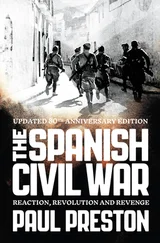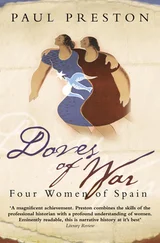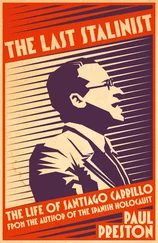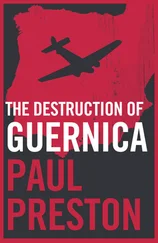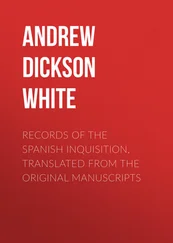In his broadcast of 30 August, Queipo declared that the search for Republican criminals would go on for ten or twenty years. He also claimed that, in the rebel zone, there had been no atrocities. With no sense of irony, he reiterated his view that any killing done according to his edict was therefore legal: ‘We might shoot someone who committed crimes but no one could possibly say that in any town, anywhere, a single person had been murdered. Those responsible have been shot without hesitation. This was done following the dictates of the edict not for the fun of killing like they did, with the greatest cruelty, burning people alive, throwing them into wells and dynamiting them, putting out people’s eyes, cutting off women’s breasts.’ 89
In fact, what is known of such broadcasts by Queipo de Llano derives from the following day’s press reports, together with occasional snippets noted down by those who heard them. Comparisons, when possible, between the two suggest that the texts printed by the press were a pale reflection of the obscenity of the originals. Newspaper editors knew better than to print the more outrageous incitements to rape and murder. Indeed, there was concern that Queipo’s excesses might be damaging to the rebel cause abroad. Accordingly, the instinctive self-censorship of the press was reinforced on 7 September when Major José Cuesta Monereo issued detailed instructions regarding foreign sensibilities. Most of his fourteen points were routine, to prevent the publication of sensitive military information. However, they specifically ordered that the printed version of the radio broadcasts be expurgated: ‘In the broadcast chats by the General, any concept, phrase or insult, even though accurate, and doubtless the result of excessive zeal in the expression of his patriotism, whose publication is not appropriate or convenient, for reasons of discretion that will easily be appreciated by our intelligent journalists, shall be suppressed.’ Similarly, in the reporting of the repression, specific details of the slaughter were prohibited. Instead, journalists were obliged to use euphemisms like ‘justice was carried out’, ‘a deserved punishment was inflicted’, ‘the law was applied’. 90
The censorship may well have been designed to limit awareness of Queipo’s incitement to the sexual abuse of left-wing women, but the extent to which the rebels considered it legitimate could be seen from what happened in Fuentes de Andalucía, a small town to the east of Seville. It had surrendered without resistance, on 19 July, to Civil Guards. With the help of Falangists and other right-wingers, a Guardia Cívica (a right-wing volunteer police force) was created which set about rounding up the town’s leftists. The houses of those arrested were looted as many of the Falangists stole sewing machines for their mothers and girlfriends. On 25 July, the Socialist Mayor and three Communist councillors were shot. It was the beginning of a massacre. In one case, that of a family called Medrano, the parents were arrested, and their three children, José aged twenty, Mercedes aged eighteen and Manuel aged sixteen, were shot. The family’s shack was burned down and the fourth child, Juan, aged eight, was abandoned to his fate. A truckload of women prisoners was taken to an estate outside the town of La Campana further north. Among them were four young girls, aged between eighteen and fourteen. The women were obliged to cook and serve a meal for their captors who then sexually assaulted them before shooting them and throwing their bodies down a well. When the Civil Guard returned to Fuentes de Andalucía, they marched through the town waving rifles adorned with the underwear of the murdered women. 91
It will be recalled that on 23 July Queipo had made his most explicit incitement to rape. The following day, he commented with relish on the savagery inflicted by Castejón’s column when it captured Arahal, a small town of 12,500 inhabitants to the south of Carmona. When news of the military rebellion reached Arahal, thirty-six local right-wingers had been locked up in the town hall. On 22 July, when a Socialist town councillor went to release them, thirteen left but twenty-three preferred to remain, fearful that it was a ruse to shoot them. With the town being bombarded with artillery, some armed men from Seville then set fire to the building and twenty-two of the rightists were burned to death, only the priest escaping with his life. When Castejón’s column entered Arahal, they reacted to this atrocity with an orgy of indiscriminate violence. Accounts of the numbers of the town’s inhabitants killed vary wildly from 146 to 1,600. Young women considered to be of the left were repeatedly raped. The Socialist Mayor, a seventy-one-year-old cobbler, who had worked hard to prevent violence, was shot. 92
Further south, in Morón de la Frontera, the local Republican elements had created a Defence Committee as soon as they heard news of the rising in Morocco. They detained those prominent rightists thought to support the rebels. Since the Civil Guard local commander pretended that he and his men were loyal to the Republic, they were allowed to go about their business. A tense peace was broken when a group of armed anarchists, unconnected with the Committee, attempted to take a judge to join the other prisoners. He had a pistol and shot one of the anarchists who, before dying, shot the judge. The Civil Guard intervened, shooting one anarchist and wounding another. Hoping for the arrival of help from Seville, the lieutenant took the right-wing prisoners and their families into the barracks, which was then besieged by the local left. The commander announced that he would surrender and that his men would lay down their arms. It was a lie. They came out using the rightist civilians as a shield and then broke through the besiegers, aiming to capture the town hall. In the subsequent fight, several Civil Guards and rightists lost their lives. When the Civil Guard barracks were searched, two guards were found dead, handcuffed together, which suggested that they had been killed for opposing the actions of the Lieutenant. 93
When Castejón’s column arrived, it was fiercely resisted. Castejón’s revenge was fierce. Corpses that littered the streets were left to be eaten by pigs. Shops and houses were looted and women violated. In a radio broadcast, Queipo de Llano crowed with delight:
An example has been made of Morón that I imagine will serve as a lesson to those towns who still foolishly maintain their faith in Marxism and the hope of being able to resist us. Just as in Arahal, in Morón there was a group of heedless men who had committed unequalled acts of savagery, attacking right-wing individuals who had not provoked them. And I have heard that in various towns the Marxists have right-wing prisoners against whom they plan to commit similar barbarities. I remind them all that, for every honorable person that dies, I will shoot at least ten; and there are already towns where we have gone beyond that figure. And the leaders should not hold out hope of saving themselves by flight, since I will drag them from out of the ground, if necessary, to implement the law. 94
Castejón himself explained how he took these towns: ‘I employed an encircling movement which enabled me to punish the reds harshly.’ 95The rural proletariat was no match for the military experience of the battle-hardened Legionarios. However, as Castejón revealed, it was a question not simply of seizing control but of imposing a savage repression. In the case of the next town conquered, La Puebla de Cazalla east of Morón, refugees from there and Arahal had given bloodcurdling accounts of what had happened when Castejón’s column had arrived. Moreover, on 30 July, a rebel aircraft dropped leaflets threatening that the town would be bombed if it did not surrender immediately. Accordingly, no resistance was offered. Nevertheless, the repression that followed was unremitting. The crimes of the left had consisted of sacking the parish church and the headquarters of Acción Popular, requisitioning and distributing food and arresting forty-six local rebel sympathizers. No deaths occurred while the town was in the hands of the Popular Front Committee. Indeed, anarchists from Málaga had been prevented from killing the prisoners. Now, the occupying troops looted houses. Before cursory military trials started, over one hundred people were murdered. More than one thousand men, from a town of nine thousand inhabitants, were forcibly mobilized into the rebel army. To replace them, women and older men were used as slave labour. 96
Читать дальше

